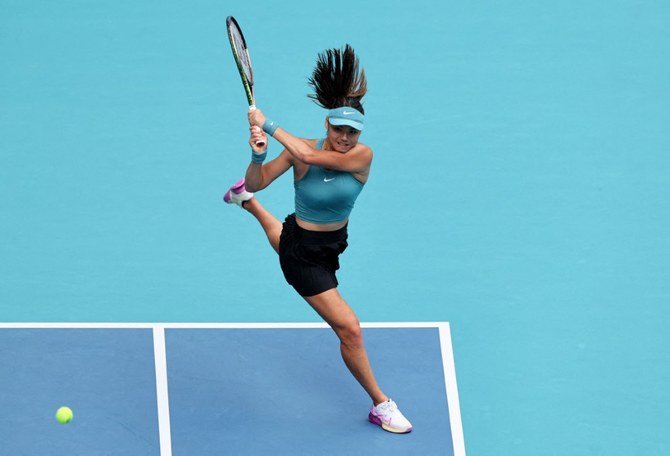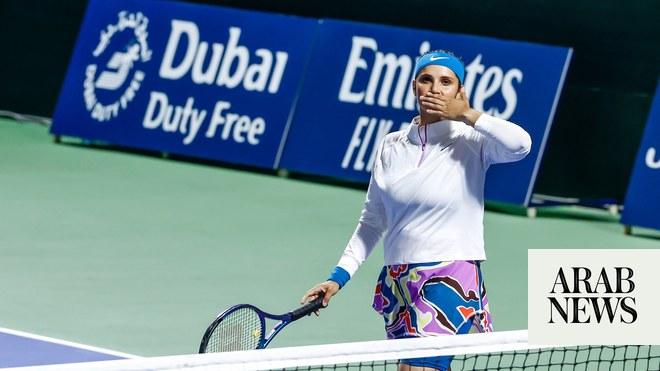
Last Sunday afternoon in Cluj-Napoca, the final day before new Covid-19 restrictions forced the Transylvania Open’s sold-out sessions to be played behind closed doors, Emma Raducanu and a group of Romanian players bade farewell to the crowd with individual, emotional speeches. As the players cheered each other on, it was the first indication of how enthusiastically Raducanu has been welcomed into the Romanian tennis fold.
Raducanu’s US Open victory generated intense media coverage and her paternal Romanian roots were an immediate source of pride for many, but also led to a debate over her identity.
“As well as Bianca Andreescu’s case, it was on social media,” says Adrian Toca, founder of Romanian tennis publication Treizecizero. “All this talk, that talk. Some people were saying: ‘Why should we root for her? She’s not Romanian.’ Others that she has Romanian origins.”
The past week has been a thorough victory for the latter view. During her time in Cluj, where she reached her first WTA tour quarter-final before a 6-2, 6-1 defeat by Marta Kostyuk, Raducanu has been welcomed by all, and it was notable how the Romanian players beckoned her into their group.
Elena-Gabriela Ruse, who trained with Raducanu on consecutive days before the tournament and went out to dinner with her team, says Raducanu first came on to their radar during the 2018 Wimbledon qualifying tournament. Another Romanian player alerted her to the presence of an unknown British girl with a Romanian name, so she went to watch.
Three years later, in Nottingham, Ruse and her partner, Monica Niculescu, another of Raducanu’s new Romanian friends, had missed out on a Wimbledon doubles wildcard. They began to talk. “Unfortunately we didn’t get it, so I asked Emma if she wants to play doubles with me,” Ruse says. “She was really funny and she told me: ‘I’m sorry Gabi, I can’t play doubles.’
“We started to be friends, she’s a nice person. I enjoy the time with her so much. She is speaking really good Romanian but she’s so shy to do it.”
That so many older players have been willing to put an arm around Raducanu is particularly valuable given her inexperience on the tour. When young players attain enormous success and celebrity, the locker room can be a lonely and sometimes even hostile place. In Raducanu’s case, she now has players from Great Britain, Romania and China looking out for her.
“We talk to her in Romanian in the locker room and we’re talking about this and she understands almost everything,” says Alexandra Dulgheru, a player who has been conducting on-court interviews in Cluj during an injury layoff. “She’s trying to give interviews in Romanian, which helps. [Players and fans] admire her even more and they embrace her like one of their own, treating her like part of the family.”
As Dulgheru described Raducanu as shy and modest, the Transylvania Open tournament director, Patrick Ciorcila, expressed satisfaction at her presence. “I also had the chance to talk a lot with her father for the past few days. He’s very well connected with Romania,” he says. “He loves the country and he loves the fact she’s here. He would like her to be here for future editions .”
On Tuesday, Raducanu recovered from the brink of defeat in the first round against the Slovenian Polona Hercog. In her interview with Dulgheru, she cited her treatment in Cluj as a source of motivation. “I was thinking: ‘I don’t want to leave here,’” she said.
Toca, who also works on the Transylvania Open digital team, says her comments went down extremely well. “It was a very nice moment for the tournament because after all those shocks with no crowd, they were a bit sad. That is how I felt it from the inside. The moment she won, everybody got the vibe back again; the Cluj vibe. Everybody was feeling good again.”
On Thursday, after reaching the quarter-final, Raducanu said her US Open trophy will be put on display at the LTA National Tennis Centre. It is a thoughtful gesture, one that took the LTA by surprise, but also a reminder of the privilege of developing as a player in a grand-slam nation with the support of a rich federation. Not even Simona Halep, a former junior No 1, can relate to that.
Over the past decade, women’s tennis in Romania has quietly grown into one of the most unlikely success stories. They not only have one of the greatest players of the generation in Halep, but also a slew of successful players beneath her. Romania has eight players in the top 150, double that of Great Britain and behind only Russia, the US and the Czech Republic.
Such depth seems like a miracle given the negligible presence of their federation or an organised system in their careers, with each of them thriving on completely distinct paths. “It’s unexpected because there were never funds pumped into this,” says Toca.
“Also, a system – they don’t have, at the young level, coaches and all that apparatus to push you and to prepare you. Everything was done individually and it’s just the quality of players they had to succeed, the talent and the luck to meet someone to [guide them].”
Having been frequently asked to explain how all of this has happened, Dulgheru has come to see numerous factors, from the competition between players to a vast amount of talent in Romania. “We grow a lot on clay. We grow with a lot of variation in our game. And it’s our grit; we’re really feisty. We have that fighting spirit, that really is a trend for Romania. That, together with the support of the family, makes us really quite strong inside.”
Dulgheru reached a career high of 26 in 2011 and her pathway is a reflection of that random luck involved in success for Romanian players. As a child, she attained essential funding for her dream only when her school teacher told her family that her classmate was the son of a director of Nissan Romania, which sometimes sponsored talented kids. They met the father out of curiosity, he watched her play and he ended up sponsoring her career, at no cost, until she broke through on the WTA.
“There are many other talented players that weren’t able to reach a high level because of financial problems,” says Dulgheru. “There are players even more talented than us, but they just couldn’t. So the ones that made it were the ones that also had some luck financially.”
Over the past 13 years, during the rise of Halep, the presence of numerous top 30 to 50 players and the success of Andreescu and Raducanu, women’s tennis has become a prominent Romanian sport. It was underlined at the Transylvania Open, the second WTA tournament in Cluj this year, and one that arrived only due to the cancelled Asian swing. Rather than the inefficient old Romanian tennis federation, it is the product of a private sporting events company run by Ciorcila, an ambitious 25-year-old former player.
Held at the 10,000-seater BT Arena, the obvious pre-tournament hope was that two different shades of Romanian tennis would converge in a blockbuster semi-final between Halep and Raducanu before packed crowds.
There were no crowds and Raducanu was eliminated, but perhaps an even more worthwhile outcome would simply be the tournament becoming a permanent fixture, with Halep, Raducanu, Andreescu and more attending in the future and Romania’s tennis structures beginning to grow in line with its rise on the court.












